10 Most Beautiful National Parks in Kenya
Planning an unforgettable safari adventure? Kenya is one of the best countries for a safari in Africa, offering a diverse range of expansive landscapes, breathtaking wildlife, and fascinating cultures.
With over 20 national parks, 15 national reserves, and 140 private conservancies to explore, the options are endless. In this travel guide, we unveil the 10 most beautiful national parks in Kenya—spectacular locations that consistently feature on top safari itineraries.
From the iconic plains of the Maasai Mara to the dramatic landscapes of Tsavo and the birdlife haven of Lake Nakuru, each park offers a unique experience teeming with wildlife, culture, and breathtaking scenery. Read on to find out more!
The Best National Parks In Kenya
1. Nairobi National Park
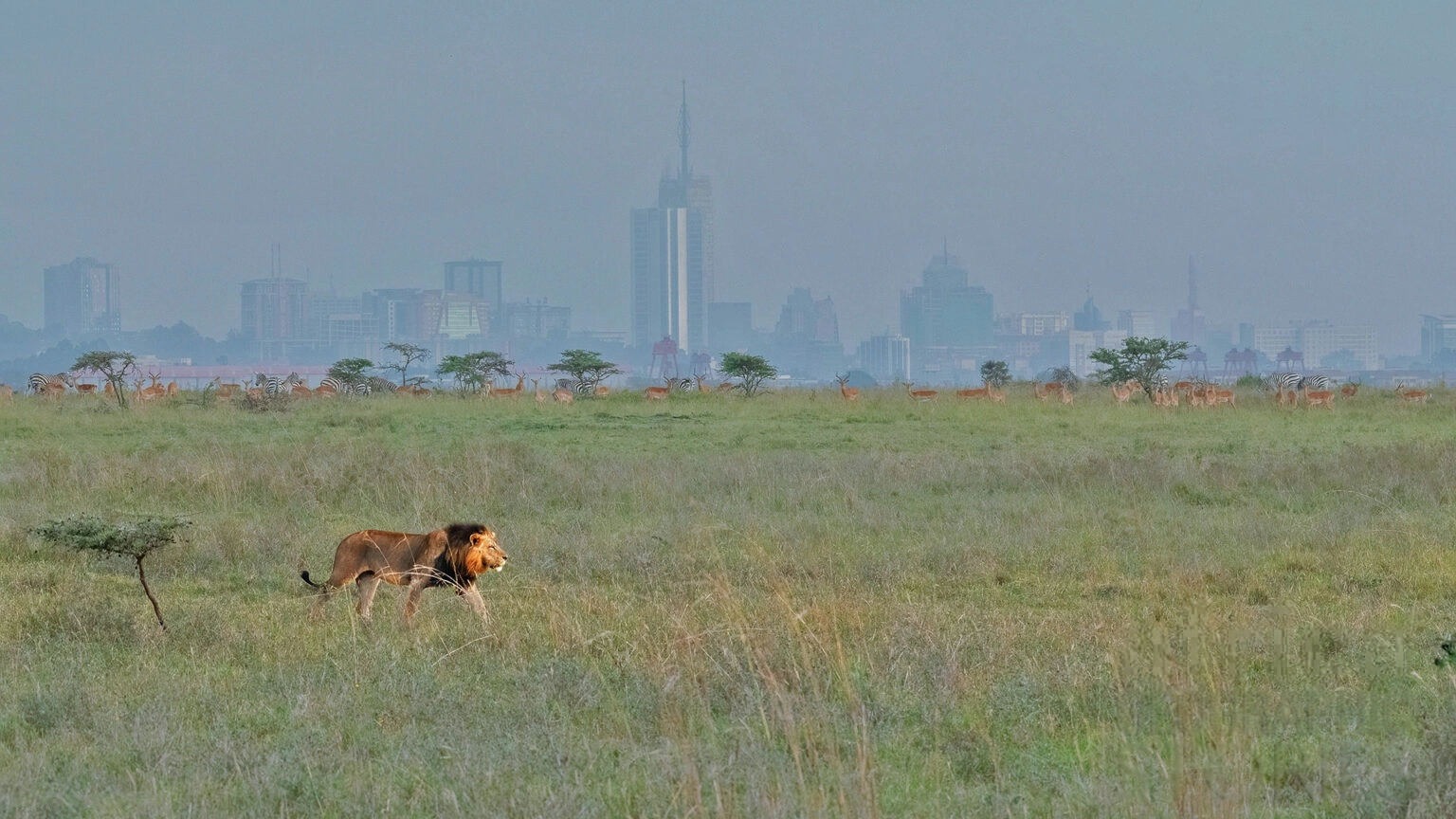
Nairobi National Park is one of the most unique national parks in Kenya—and in the world!
Opened in 1946, it was the first national park in Kenya.
What makes it truly special is that it’s located just 7 km from Nairobi’s city center, making it the only national park in the world within a capital city.
Here, you can see wild animals like lions, giraffes, zebras, and even endangered black rhinos roaming freely—with the city’s skyline in the background.
It’s an amazing mix of wild nature and urban life!
The park covers 117 km² (45 square miles) and has open grasslands, forests, rivers, and rocky valleys. It’s home to more than 100 kinds of mammals and over 400 bird species.
One of the highlights is visiting the Sheldrick Wildlife Trust, where you can meet baby elephants and rhinos that have been rescued and are being cared for before returning to the wild.
There’s so much to do here including game drives to see the animals up close, walking along nature trails, enjoying a picnic in the wild and learn about conservation and local culture through guided programs
2. Masai Mara National reserve

The Masai Mara is one of the most famous and beautiful national parks in Kenya—and in all of Africa.
It is best known for the Great Migration, one of the world’s most incredible wildlife spectacles.
Every year, millions of wildebeests and zebras cross the Mara River from Tanzania’s Serengeti into the Masai Mara, searching for fresh grass.
Watching this amazing event, with hungry crocodiles waiting in the river and predators on land, is something you will never forget!
But the Mara is more than just the migration.
It’s also one of the best places to see Africa’s iconic Big Five animals. In fact, the Mara has one of the highest lion populations in the world.
You will also find over 500 bird species, from colorful songbirds to powerful birds of prey.
The Maasai people, who live in this region, are another reason to visit. They are known for their colorful clothes, traditional dances, and deep knowledge of nature.
You can meet them, visit their villages, and even take a nature walk with a Maasai warrior, who will show you animals, tracks, and plants used for medicine. Many Maasai communities also run private conservancies, where your visit helps support local families and protect wildlife.
For a truly magical experience, try a hot-air balloon safari at sunrise.
As you float above the savannah, you’ll see herds of animals below and understand why the Maasai call it the “Mara,” meaning “spotted land”—from the sky, the landscape is dotted with trees, bushes, and animal shadows.
Other great ways to explore include walking safaris with trained guides, horseback rides through the open plains, and day and night game drives to see animals in action.
3. Samburu National Park
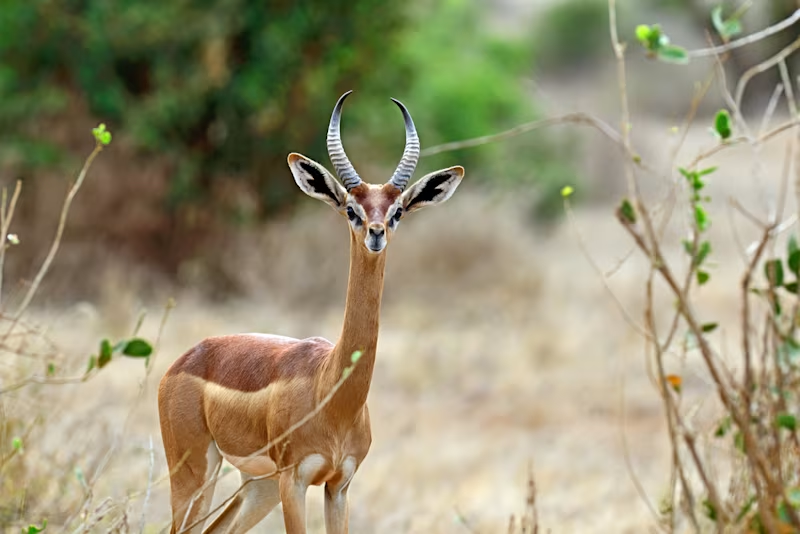
Samburu National Reserve, located north of Laikipia, is one of the most exciting and unique national parks in Kenya. It’s famous for animals you won’t easily see in the southern parks.
These are called the “the Samburu Special Five”, and they include Grevy’s zebra (with thin, beautiful stripes), Reticulated giraffe (with neat, patterned spots), Gerenuk (a long-necked antelope that stands on two legs to eat), Beisa oryx (a desert antelope with long, sharp horns) and Somali ostrich (with a blue neck and legs).
But that’s not all—you can also spot lions, leopards, cheetahs, elephants, wild dogs, buffaloes, crocodiles, and over 450 kinds of birds.
It’s one of the best places in Kenya to see leopards and big-tusked elephants (tuskers).
The Samburu people, known for their colorful clothing and warrior traditions, live in this region and help protect the animals—especially the endangered Grevy’s zebra.
You can visit local villages, learn about their way of life, and even go on camel safaris led by Samburu guides. Samburu is much drier than other parks, but the Ewaso Nyiro River runs through it and is the heart of the reserve.
When animals gather along the riverbanks to drink, it creates an unforgettable scene—perfect for photographers! This park also has a special story: it’s where George and Joy Adamson raised Elsa the lioness, made famous by the movie and book Born Free.
4. Ol Pejeta Conservancy
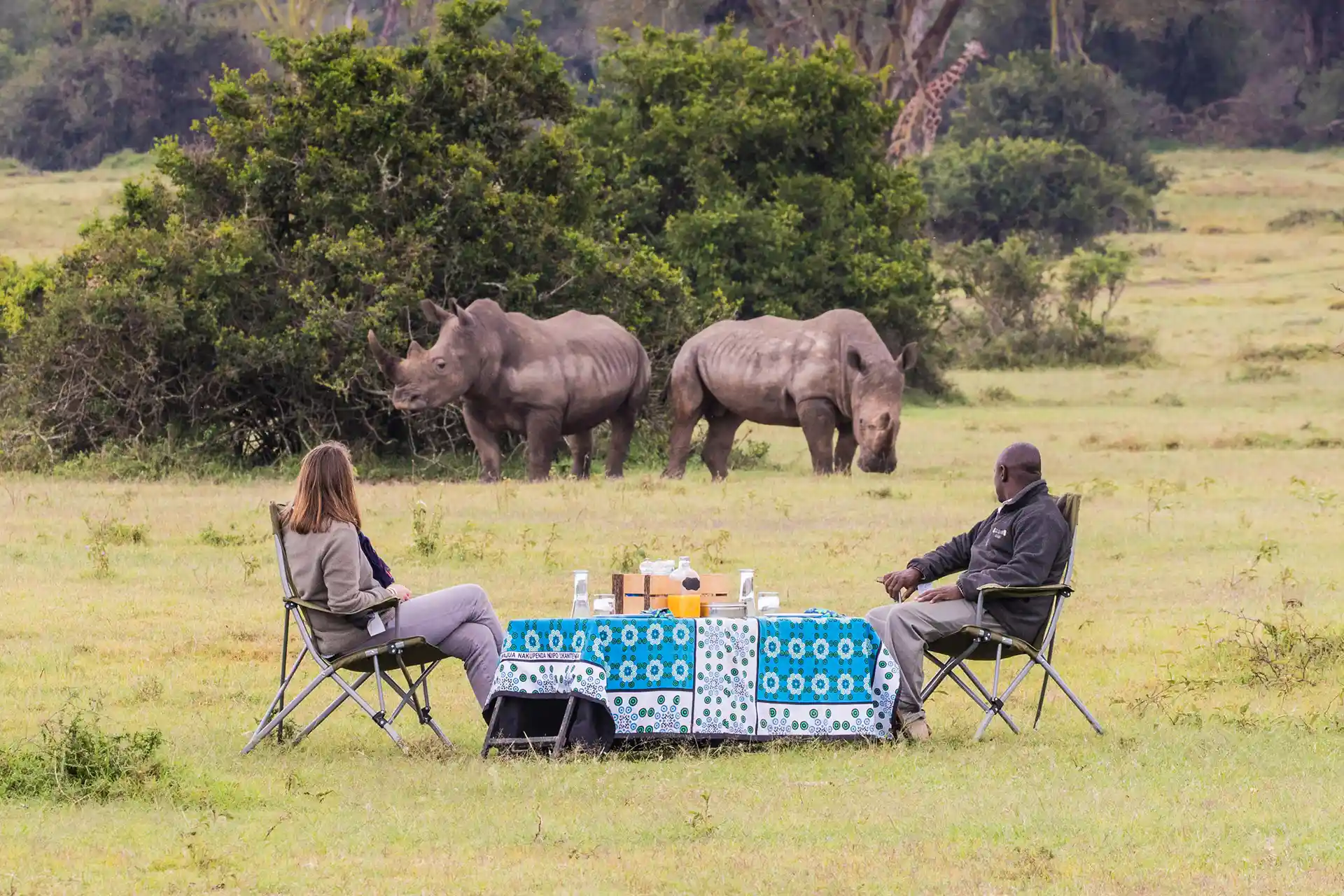
Imagine waking up in your comfortable safari tent to the sound of hyenas laughing, lions roaring, and birds singing.
As you sip your morning coffee, you look out and see the majestic Mount Kenya rising in the distance.
You are in Ol Pejeta — a shining example of how nature and people can live together in harmony.
Located in central Kenya, Ol Pejeta is home to the Big Five—plus other amazing animals like giraffes, cheetahs, zebras, and wild dogs.
What makes Ol Pejeta truly special is its focus on protecting endangered species. It is home to the last two Northern White Rhinos on Earth, and many critically endangered black rhinos.
You can even visit the Sweetwaters Chimpanzee Sanctuary, where rescued chimps now live safely and happily in their new forest home.
But Ol Pejeta is not just about animals—it’s also about people.
You will meet local communities who live and work nearby and learn how they help protect nature. You can also see how anti-poaching dogs and rangers work together to keep wildlife safe.
There are so many fun and exciting things to do here: go on game drives, day or night, take a walking safari with a guide, track lions using special radio collars, visit the rhino and chimpanzee sanctuaries, and learn about real conservation in action.
5. Tsavo West National Park
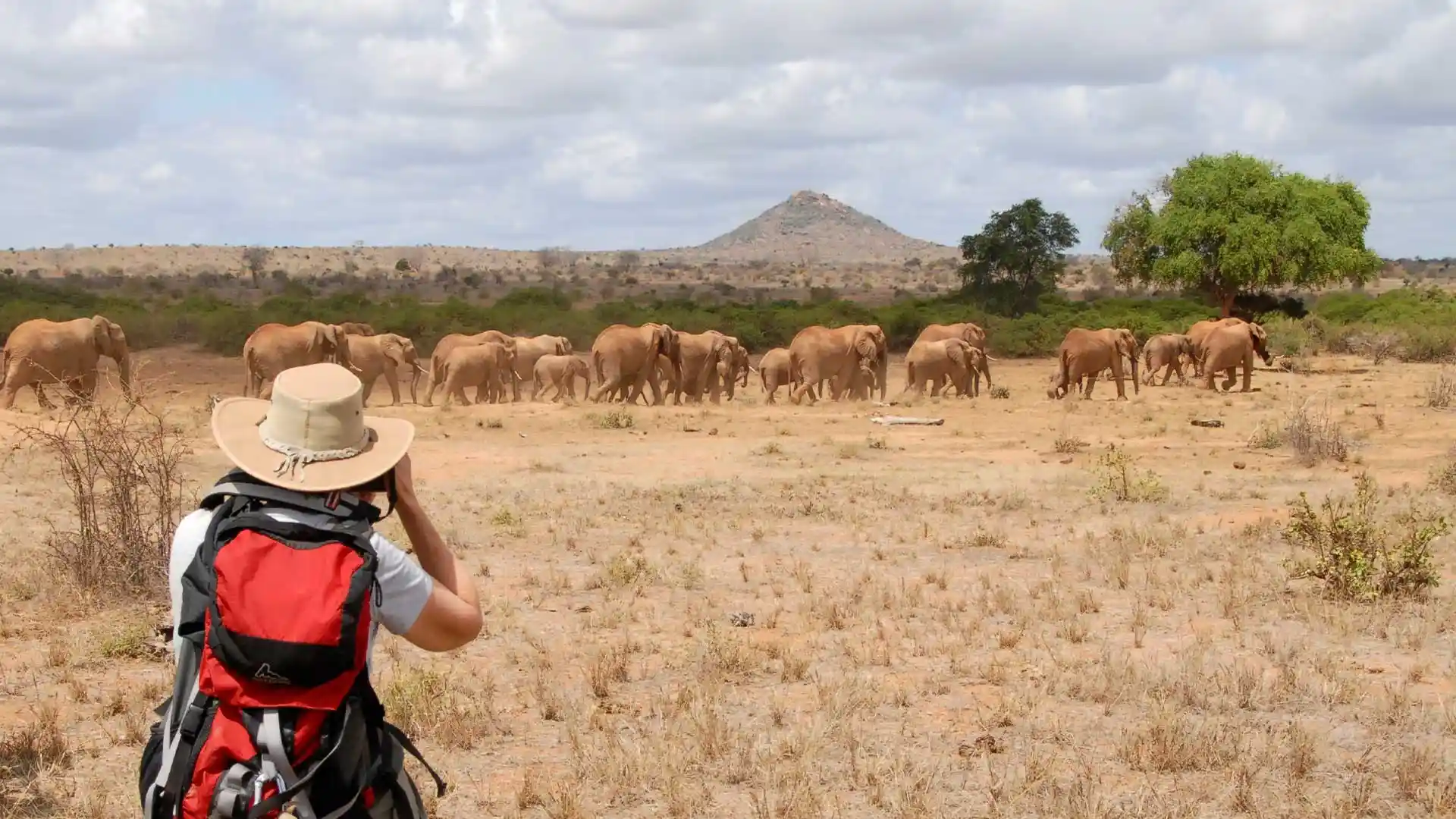
Tsavo West National Park is one of the most beautiful and wild places in Kenya.
It’s located in the southeast of the country and is part of the second-largest national park in Kenya, covering a massive 9,065 km² (3,500 square miles). This park is full of dramatic landscapes.
You will see open grasslands, rocky hills, Acacia woodlands, lava fields, and volcanic cliffs—all part of an ancient land shaped by volcanicity and time.
It is a great place for rock climbing, and from some high points, you can even spot Mount Kilimanjaro in the distance!
One of the most famous spots in Tsavo West is Mzima Springs—a beautiful oasis with crystal-clear water where you can see hippos, crocodiles, fish, birds, and sometimes even elephants stopping by for a drink. There’s even an underwater viewing room, so you can watch hippos swimming just beneath the surface!
Tsavo West is also home to many amazing animals, including Elephants (especially huge tuskers!), Lions, leopards, cheetahs, and buffaloes, Eastern black rhinos, protected inside the Ngulia Rhino Sanctuary and hundreds of bird species that fill the skies with color and song
The park also holds secrets from ancient times—there are Stone Age archaeological sites, adding a sense of mystery to the wild beauty around you.
Sunsets in Tsavo West are breathtaking. As the sky turns red and gold, the silhouettes of elephants and rocky hills create an unforgettable view.
6. Amboseli National Park
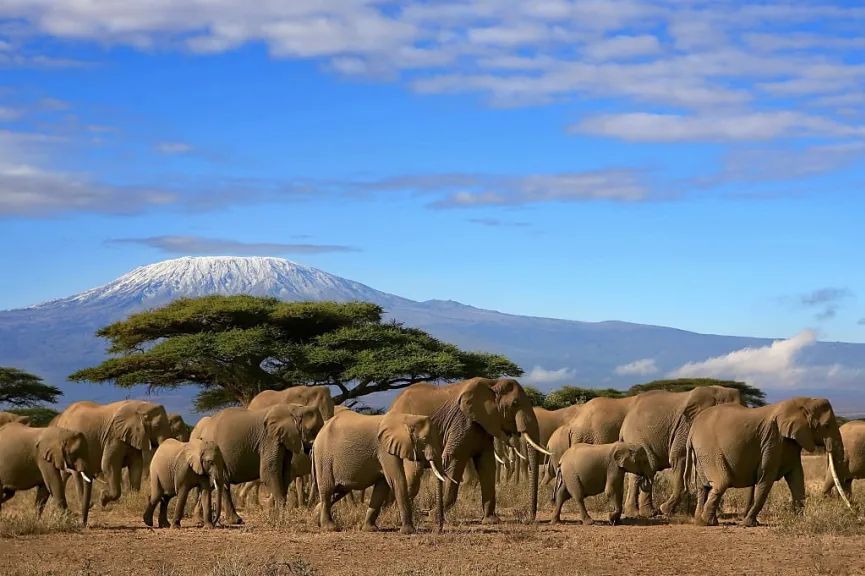
Amboseli National Park is one of the most breathtaking national parks in Kenya.
It sits near the border with Tanzania and is famous for one unforgettable view: Mount Kilimanjaro, the tallest mountain in Africa.
Imagine this—the sun rising over the snow-capped peak, while elephants walk peacefully across the grassy plains below. It’s one of the most magical sights in all of Africa.
Amboseli is best known for its large herds of elephants, some of the most studied and well-protected in the world. You can watch these gentle giants up close and see how they care for their young, travel in family groups, and even communicate with each other.
There’s also plenty of other wildlife to see, including Lions, leopards, buffaloes, rhinos, Giraffes, zebras, hyenas, wildebeests, and gazelles, as well as Flamingos and other water birds during the rainy season.
For amazing views, climb Observation Hill.
From the top, you can see the whole park and get the best look at Mount Kilimanjaro, especially in the early morning or late afternoon when the skies are clear.
One of the park’s hidden treasures is Lake Amboseli, a dry lakebed that sometimes fills with water and attracts flamingos and other birds. The contrast between the dry, dusty land and the wet, shimmering lake is stunning. Amboseli is also a place to experience Maasai culture.
You can visit a local village to learn about their traditions, clothing, dances, and way of life. It’s a great way to connect with the people who have lived in this land for generations.
7. Mt Kenya National Park
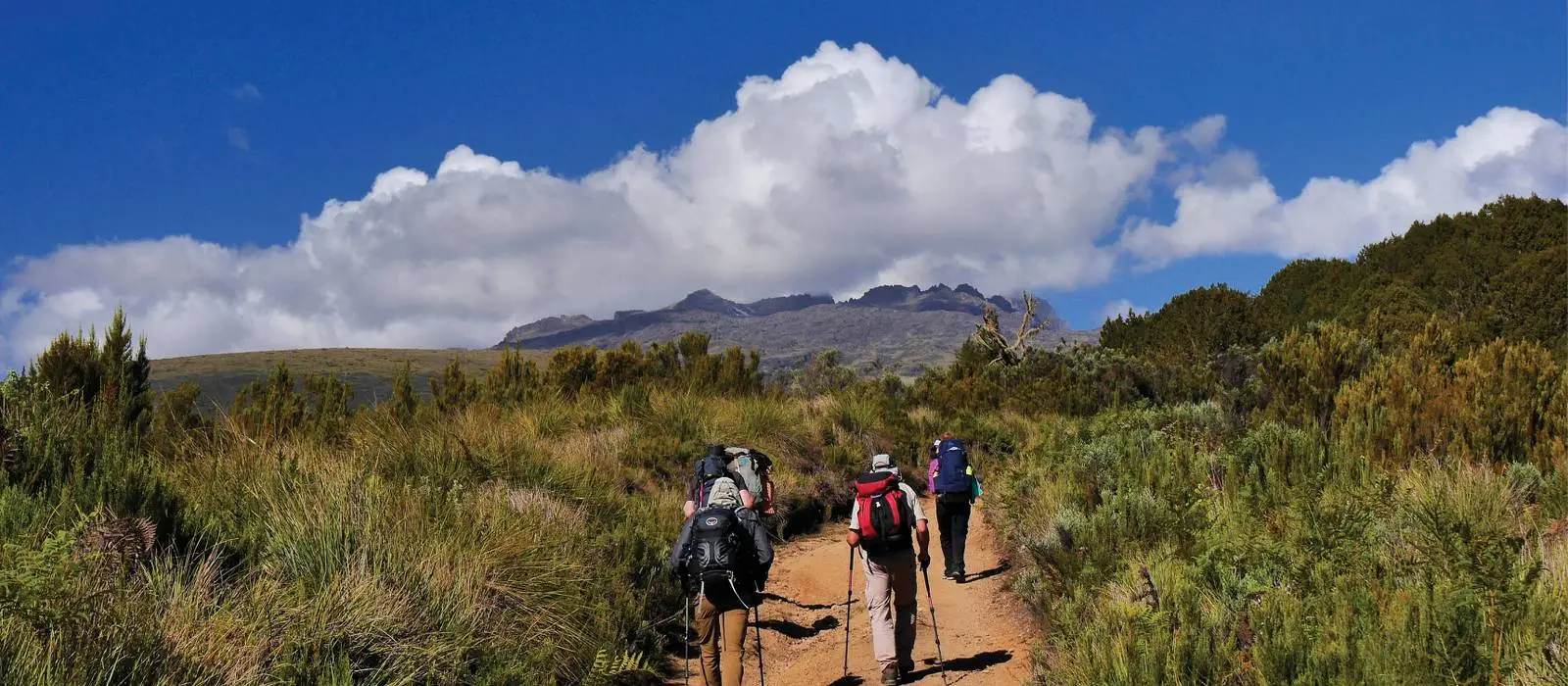
If you love hiking, climbing, or simply being in nature, Mount Kenya National Park should be at the top of your adventure list.
Home to Kenya’s highest mountain (and the second highest in Africa after Kilimanjaro), this UNESCO World Heritage Site offers some of the most stunning scenery and hiking trails in the country. Most trekkers aim for Point Lenana, the main peak for hikers.
It’s a challenging but doable trek, and the views from the top are truly unforgettable.
For a shorter visit, you can take a 10 km (6.2-mile) day hike to the Met Station, which still gives you a taste of the mountain’s beauty. As you climb higher, the landscape changes from thick forest to alpine meadows, rocky ridges, and even glaciers and mountain lakes.
You’ll walk past sparkling streams, deep valleys, mineral springs, and Afro-alpine vegetation found nowhere else in the world. It feels like stepping into a different planet!
The park is also home to some amazing wildlife, including Elephants, Bushbucks, elands and Colobus monkeys. But the biggest attraction is the mountain itself—its peaceful trails, fresh air, and jaw-dropping views.
For more adventure, there’s also rock climbing on the lower peaks and wild camping for those who want a true wilderness experience. Many of the trails are quiet and less crowded, making them perfect for nature lovers who enjoy solitude.
Mount Kenya lies in the Laikipia Plateau, a region filled with community-run conservancies where your visit helps support local families and conservation efforts. There are also eco-lodges and homestays that give you a more personal, meaningful travel experience.
Even the drive from Nairobi to Mount Kenya is amazing—it’s one of Kenya’s best road trips, with changing scenery, small towns, and beautiful countryside all along the way.
8. Aberdare National Park
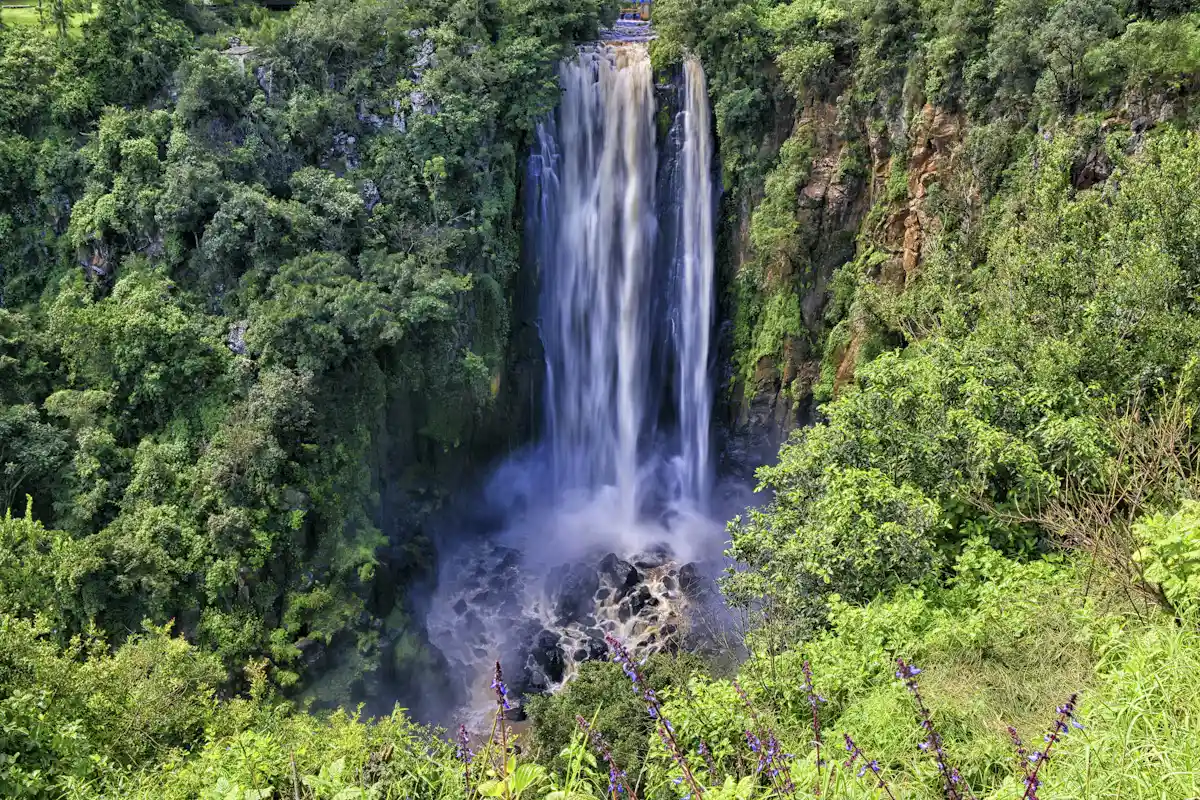
Aberdare National Park is one of the most unique national parks in Kenya, set in the cool, misty highlands of central Kenya. It’s known not just for its wildlife, but for its beautiful mountain scenery, thick forests, and roaring waterfalls.
This park is perfect for hiking. The high moorlands, called the High Park, offer great trails to peaks like Lesatima, Il Kinangop, and Kipipiri. You’ll need a guide and a permit, so plan ahead.
Created in 1950 to protect the Aberdare Mountains, the park is a mix of dense forests, steep valleys, open moors, and dramatic falls.
It’s home to black rhinos, elephants, buffaloes, leopards, baboons, and colobus monkeys.
Bird lovers can look for over 250 species here. Aberdare is also full of history. In the 1950s, the forest hid Mau Mau fighters during Kenya’s freedom struggle.
It’s also where Princess Elizabeth became Queen in 1952—she was staying at Treetops Lodge when she got the news. You’ll need a 4×4 vehicle, especially during rainy months, but the wild beauty and peaceful air make it worth every moment.
9. Lake Nakuru National Park
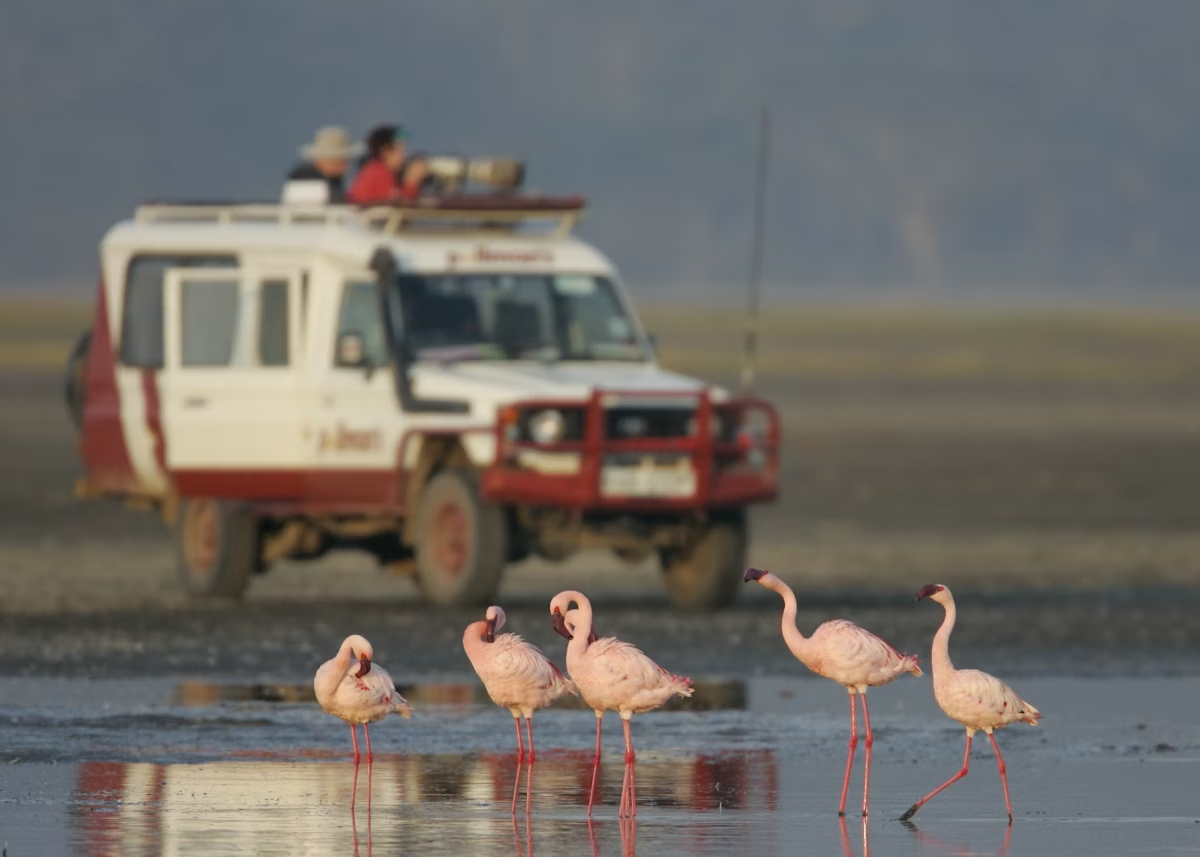
Just a short drive from Nairobi, Lake Nakuru National Park lies in the heart of the Great Rift Valley and is a perfect place to enjoy a day filled with game drives, birdwatching, hiking, and picnics.
The park is famous for its amazing birdlife—over 450 species have been spotted here.
Thanks to the lake’s rich algae, many water birds come here, including pelicans and the famous flamingos (though their numbers have dropped because of pollution and nearby human activity). You can also see animals like waterbucks and white rhinos roaming the park.
Lake Nakuru hosts the exciting Cycle With the Rhinos race every year—a 50 km (31 miles) ride that raises money to protect these endangered animals.
Surrounding the lake are tall ridges with fantastic viewpoints. Don’t miss Lion Hill, Baboon Cliffs, and the Out of Africa Lookpoint for breathtaking views of the lake and valley.
Many visitors also explore nearby Menengai Crater, a huge volcanic caldera just outside Nakuru town. It’s a place rich in history—during the 1950s, Mau Mau fighters used caves here to hide during their fight against British colonial rule.
10. Lake Naivasha
Lake Naivasha National Park is one of the most beautiful and easy-to-reach spots near Nairobi.
The deep blue freshwater lake is surrounded by waterfalls, gorges, acacia forests, and old volcanoes, creating a stunning natural mix.
Hippos love the cool waters of the lake, and you’ll often see pelicans and many other water birds nearby.
On the shores, small groups of zebra, buffalo, and different kinds of antelopes roam freely. It is also a top place for birdwatching, especially if you like birds of prey.
Lake Naivasha is famous for being home to naturalist Joy Adamson and her husband George, who raised the lion cub Elsa here.
Their story became the famous book and movie Born Free.
Today, their old home, Elsamere, is a museum and center for conservation and nature studies.
kenya Safari Tours
Our Trusted Partners






